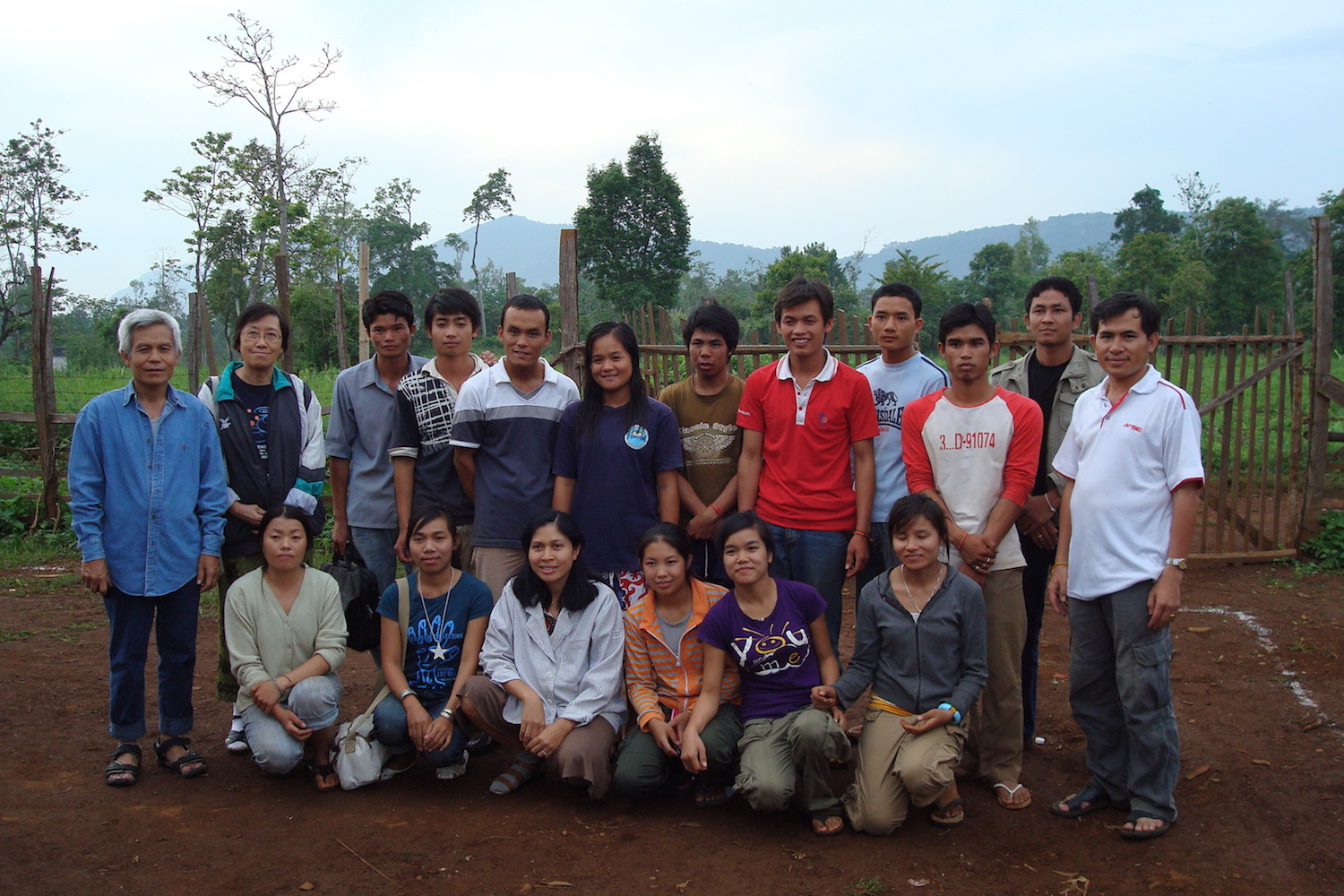Human Rights Watch: 14 June 2013
After six months, the Lao government’s failure to explain the abduction of a prominent social activist at a police checkpoint or account for his whereabouts raises the gravest concerns for his safety. The Lao authorities should realize their cover story is fooling no one, and start telling the truth. Brad Adams, Asia director
(Bangkok) – Authorities in Laos have failed to seriously investigate or credibly explain the enforced disappearance six months ago of a leading social activist, Sombath Somphone, Human Rights Watch said today.
Sombath, 60, the 2005 recipient of the Ramon Magsaysay Award for Community Leadership, was last seen by his wife on December 15, 2012, as they were driving separately from his office in the capital, Vientiane, to their home for dinner. A police security video shows him being stopped at a police checkpoint and taken into custody. He never arrived home.
“After six months, the Lao government’s failure to explain the abduction of a prominent social activist at a police checkpoint or account for his whereabouts raises the gravest concerns for his safety,” said Brad Adams, Asia director at Human Rights Watch. “The Lao authorities should realize their cover story is fooling no one, and start telling the truth.”
Security camera footage from the Municipality Police Station, obtained by Sombath’s wife, Ng Shui Meng, shows police stopping Sombath’s jeep at the Thadeua police post at 6:03 p.m. on December 15. Unidentified men then took Sombath into the police post. A motorcyclist stopped at the police post and drove off with Sombath’s jeep, leaving his own motorcycle by the roadside. A truck with flashing lights then stopped at the police post. Two people got out of the truck, took Sombath into the vehicle, and then drove off.
On December 19, the Lao Ministry of Foreign Affairs issued a statement confirming the incidents recorded on the security camera, but claimed that Sombath had been kidnapped for personal or business reasons.
In the six months since Sombath’s enforced disappearance, Lao authorities have told his family, foreign diplomats, and United Nations agencies that they have been investigating the case. However, on June 7, in the third and latest government news conference regarding the case, the deputy director general of the police, Col. Phengsavanh Tiphavongxay, said Sombath “has not yet been found” and provided no new information on hiswhereabouts, fate, or who was responsible for his abduction.
There was no indication that the authorities had made any follow-up inquiries into the actions recorded on the police security video. Instead, Phengsavanh said they had looked for Sombath in various villages where he helped set up community education and development centers, and that they had sought information about Sombath from INTERPOL, ASEANAPOL, and foreign governments.
“The Lao authorities say they have been looking for clues to Sombath’s disappearance in distant villages and overseas, but they have ignored all the video evidence of his kidnapping in downtown Vientiane,” Adams said. “The reality is that police failed to stop him from being taken away and the government has not shown any interest in conducting a real investigation so they can find Sombath and safely return him to his family.”
Enforced disappearances are defined under international law as the arrest or detention of a person by state officials or their agents followed by a refusal to acknowledge the deprivation of liberty, or to reveal the person’s fate or whereabouts.
Enforced disappearances violate or threaten to violate a range of fundamental human rights protected under the International Covenant on Civil and Political Rights, to which Laos is a party, including prohibitions against arbitrary arrest and detention; torture and other cruel, inhuman, or degrading treatment; and extrajudicial execution.
Laos in September 2008 became one of the first countries in Southeast Asia to sign the International Convention for the Protection of All Persons from Enforced Disappearance. As a signatory, Laos is obligated under international law to refrain from acts that would defeat the object and purpose of the treaty.
Members of ASEAN, to which Laos belongs, should publicly raise their concerns about Sombath’s enforced disappearance, Human Rights Watch said. On February 19, Human Rights Watch sent a letter to each of the national commissioners of the ASEAN Inter-governmental Commission on Human Rights (AICHR), calling for them to investigate the case. The commission’s Terms of Reference give it the right “to obtain information from ASEAN Member States on the promotion and protection of human rights.”
Human Rights Watch has not received a response from any of the commissioners or the ASEAN Secretariat. Brunei and Thailand attempted to raise Sombath’s disappearance for discussion at the AICHR, but those efforts were strongly opposed by other national commissioners, including Laos, sources who were at the meeting told Human Rights Watch.
“The silence of ASEAN’s human rights commission about Sombath’s case reflects this body’s fundamental inability to protect human rights,” Adams said. “Instead of trying to help the victims of abuses, ASEAN has chosen to hide behind the excuse of ‘non-interference’ and let human rights violations continue with impunity.”
